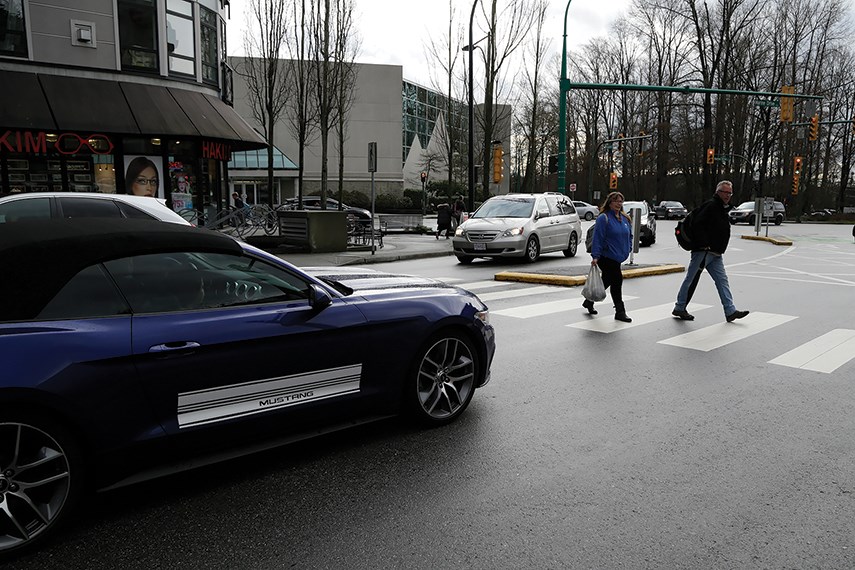With better infrastructure, slower speeds and a few stiff fines, the City of North Vancouver is laying the groundwork for much safer streets in the years ahead.
Council unanimously adopted a new safe mobility strategy Monday night.
The strategy lays out more than 20 tactics the city may be expected to use in the coming years. Among them: expanding the network of protected lanes for people on bikes and scooters; restricting curbside deliveries and pick-ups in areas where conflicts are most likely to occur; lowering speed limits in key areas to 30 kilometres per hour; encouraging slower driving by making streets narrower and adding medians and speed bumps; redesigning intersections and traffic signals to prioritize people on foot and bike; and improving visibility with better lighting.
It also aims to encourage better habits through public education, targeted enforcement in known problem areas, and seeking the province’s approval to use automated enforcement “where appropriate.”
The safe mobility strategy comes four years after then-Coun. Linda Buchanan, now the city’s mayor, won unanimous support for a motion calling on the city to become a Vision Zero municipality, a movement that seeks to reduce traffic deaths and injuries to zero by making safety the priority in designing transportation networks. In 2019, Oslo became the first major city to achieve that goal.
Between 2011 and 2015, an average of 10 people have been seriously injured or killed per year on the City of North Vancouver’s streets, according to city staff.
The strategy doesn’t get into the specifics of which streets will be first in line for wider sidewalks or when photo radar may be introduced. Rather, it is intended to guide council and set priorities for the coming years.
The document represents a shift in thinking that has been a longtime coming, Buchanan said at Monday night’s council meeting.
“I know it’s taken a lot of work and research and data collection to pull the pieces together, but very happy to see this day come,” she said. “We have been designed in the past primarily for the movement of vehicles and we are moving in a different direction and this policy document sets that direction.”
Coun. Tony Valente emphasized the human costs that come from needless collisions on the streets.
“In some ways, this plan might seem like a nice-to-have, but it’s not. This is really a must,” he said. “When someone gets hurt, it’s not just a loss for them personally. It’s a loss for their family, for the community in general, and for the relatives that have to take care of them and the trauma and emotional scars that are left.”
Valente also pre-emptively defended automated enforcement, which is always a politically divisive issue.
“We can’t have officers everywhere all the time, and at the end of the day, some element of enforcement is necessary to change behaviours,” he said.
Coun. Tina Hu suggested she would have welcomed the Vision Zero philosophy during her days in high school when biking on busy arterial streets was her only option for commuting.
“I think safety should be, no doubt, the first priority in a municipality, given the financial capacity of the city at the time,” she said.
The strategy, however, wasn’t without its critics. Coun. Holly Back worried that more speed bumps and narrower streets would slow down response times for North Vancouver City Fire Department crews. And she added she didn’t want to close any more streets to non-local traffic after receiving blowback from residents not happy with the locals-only traffic measures installed on their streets during COVID-19. Coun. Don Bell also raised conflicts between different types of users on multi-use paths. Both Back and Bell voted in favour of the safe mobility strategy though.
Coun. Jessica McIlroy said the strategy would be a good chance for the city to put its money where its mouth is when it comes to showing what council’s transportation priorities are.
“I think this is a wonderful example of how to have our infrastructure actually clearly demonstrate, in a physical form, the goals that we’ve taken on as a city,” she said. “I hope that we do remember this discussion when it comes to be budget time because … that is where the rubber hits the road, which is a terrible pun in this moment, but the first thing that came to mind.”



